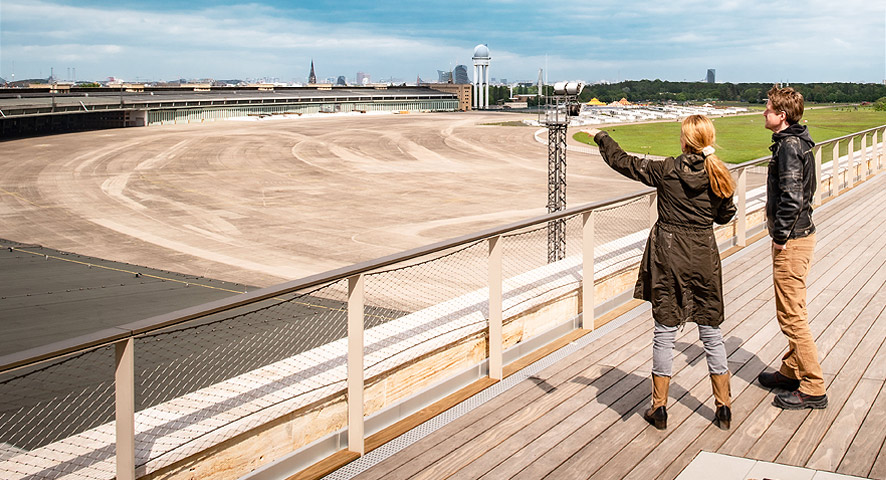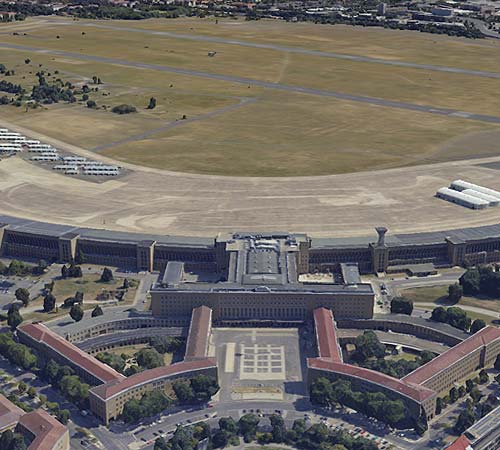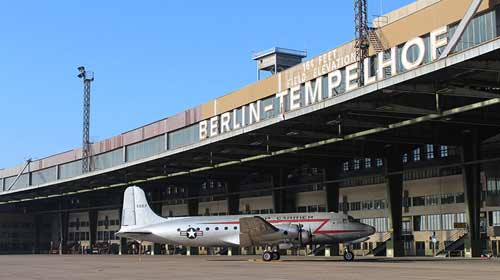Tempelhof Airport
Tempelhof Airport is to become a future-oriented meeting and exchange place serving the public interest for Berlin, Germany and the whole world. A city within a city, colourful and diverse with art, culture, creative industries, public uses, and major events.
Interesting facts about the building:
- Largest contiguous building at the time of its construction (1936–41) and the most modern airport of its time
- building named Historic Landmark of Civil Engineering in Germany by the Federal Chamber of Engineers in 2011
- Gross indoor floor space of approximately 300,000 m² on an almost 400 hectare campus
The monumental terminal reflected the preferred self-representation of the German state at the time it was built, while the modern architecture on the air side emphasizes the engineering structure. But it's not just the size that impresses. Since its inception, the airport has been the setting and backdrop for important historical events in Germany that reflect the history of the 20th century. The place is just as inseparable from the history of flight as it is from the horrors of the Cold War and the great solidarity shown during the 1947-48 Berlin Airlift.
Industries
- Media & Creative industries
- Art & Culture
- Events
Development of the district
The development of the former airport into a district for art, culture, creative industries, and public uses is a generational project. Especially since the building was never fully completed and parts are still under construction today. Inadequate construction at the time the airport was built and especially after the start of the war, as well as inadequate maintenance, had left the now-listed in poor condition after it closed. In order to make use of the space, the building will be extensively renovated in stages over the coming decades in a climate-friendly manner.
Even if the building needs a complete renovation, a good 80 companies and institutions now have their offices and commercial space in the airport building, including designers, musicians, digital agencies, game developers, and even the Berlin police.
Today, the internationally sought-after event location already offers visitors from all over the world an extraordinary stage for events such as fashion and sports fairs, international art exhibitions, theater performances or the annual Formula E racing event.
Tempelhof Projekt GmbH, founded in 2011, is responsible for the planning, refurbishment, maintenance, operation and gradual development of the airport with a team of around 90 people on behalf of the Berlin Senate Department for Urban Development, Building and Housing of the State of Berlin.




